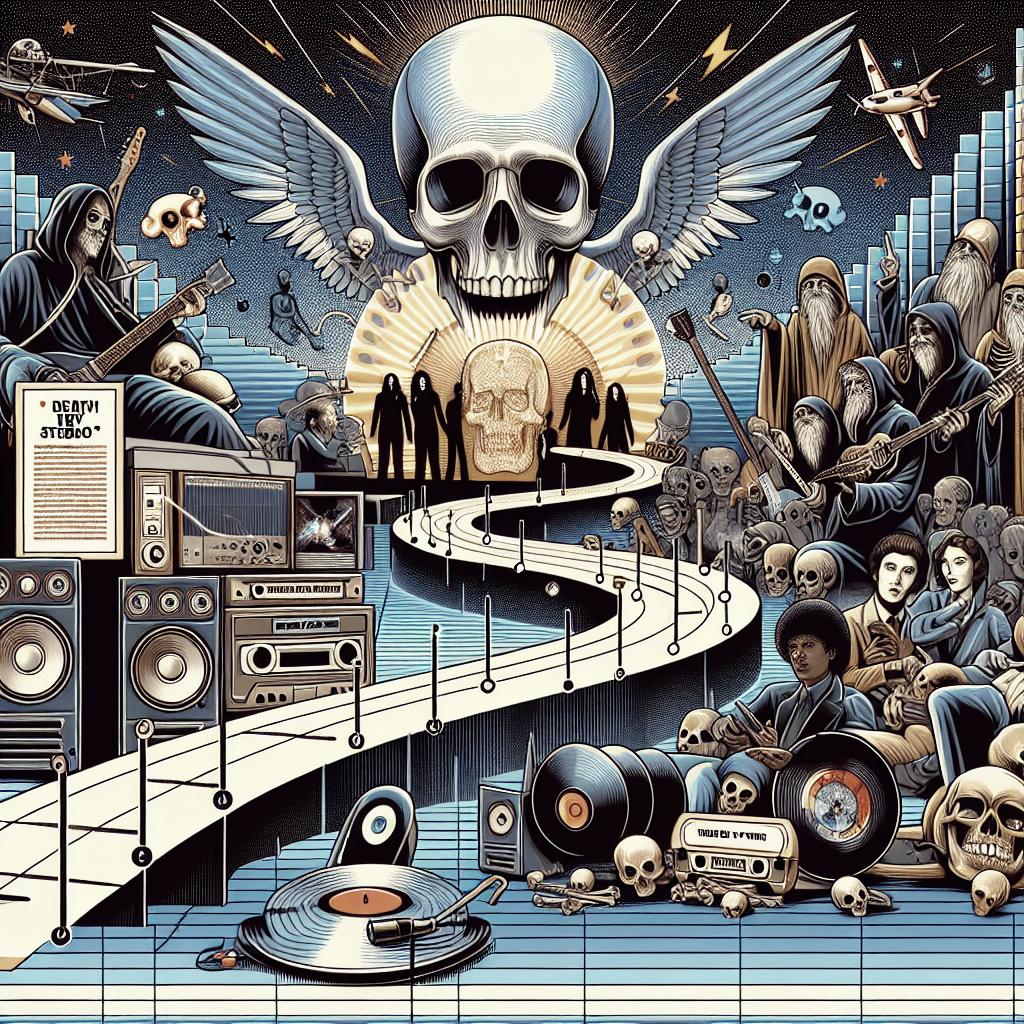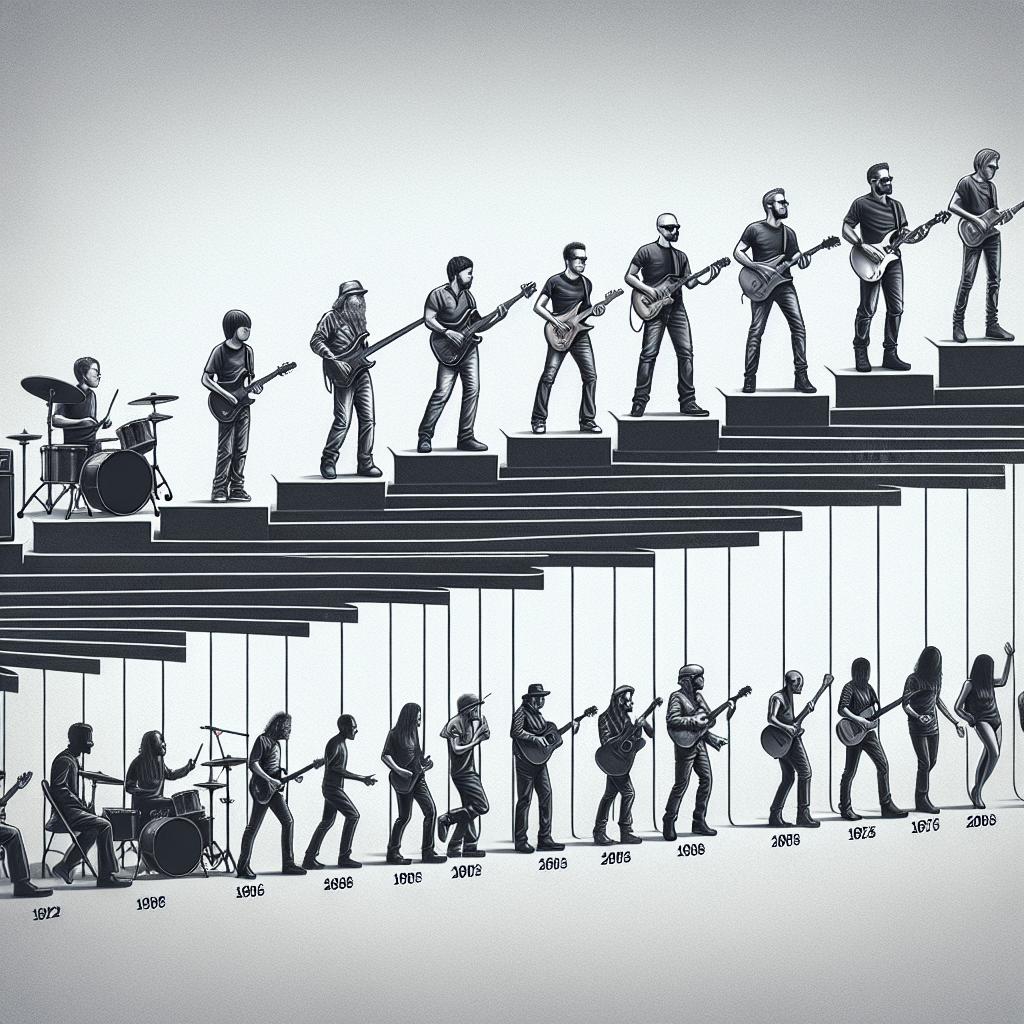“`html
Death by Stereo is a name synonymous with the Southern Californian hardcore punk scene. Over the decades, this band has evolved its sound while maintaining a fervent fan base. In this article, we will be exploring each significant era of Death by Stereo’s discography, starting from their debut album “If Looks Could Kill, I’d Watch You Die” in 1999, to their sixth album “Black Sheep of the American Dream” in 2012. Along the way, we will delve into how each album has contributed to their legacy and what makes each record a pivotal chapter in their history.
If Looks Could Kill, I’d Watch You Die (1999)
Death by Stereo’s debut album, “If Looks Could Kill, I’d Watch You Die,” was released in 1999. This album introduced the band to the world with a rapid-fire mix of punk rock, hardcore, and a dash of metal. The raw energy and unapologetic lyrics were an instant hit in the underground scene. Songs like “Bet Against Me, You Lose” and “No Shirt, No Shoes, No Salvation” quickly became anthems among fans.
The album was recorded under the Indie label Indecision Records, which provided a suitable platform for their unrefined sound and aggressive style. The combination of technical guitar riffs, fast-paced drums, and Efrem Schulz’s commanding vocals made this record an essential start for their long-lasting career. It was a reflection of their angst and passion, clearly resonating with audiences who were hungry for something fierce and genuine.
Day of the Death (2001)
In 2001, Death by Stereo released “Day of the Death,” their second full-length album, marking their first collaboration with Epitaph Records. This record showcased the band’s growth, both musically and lyrically. The production quality improved significantly, capturing the intensity of their live performances more accurately.
Tracks such as “Wasted Words” and “Middle Fingers” stood out, becoming notable entries in the band’s catalog. The album maintained the hardcore punk foundation, but added layers of melody and complexity. The band’s social commentary became more poignant, addressing themes such as politics, identity, and rebellion. This record not only solidified their presence in the hardcore scene but also set the stage for experimental growth.
Into the Valley of Death (2003)
“Into the Valley of Death,” released in 2003, is often regarded as one of Death by Stereo’s most polished and ambitious projects. Still under Epitaph Records, this album saw the band meshing their hardcore roots with more melodic and experimental elements. The opening track “The Plague” sets a dynamic tone that carries throughout the album.
Lyrically, the band continued to evolve by tackling broader and more complex themes. From personal struggles to societal critiques, the album offers a multifaceted perspective on life and identity. “Beyond the Blinders” and “Unstoppable” are prime examples of tracks that challenged their audience to think and reflect, all while delivering high-energy musicianship. This period highlighted the band’s willingness to take risks and expand their artistic boundaries.
Death for Life (2005)
Aligning with Epitaph Records once again, the band released “Death for Life” in 2005. This album pushed the boundaries further, incorporating heavier metal elements along with their signature hardcore sound. The lead single, “Entombed We Collide,” became prominent for its fusion of aggressive riffs and introspective lyrics.
The album’s title reflects its central theme: existential struggle and the essence of life and death. Though this record polarized fans, it demonstrated Death by Stereo’s depth and artistic evolution. Tracks like “Let Down and Alone” and “Forever and a Day” stand out as exploratory efforts that juxtaposed harsh reality with a sense of hope and resilience. This period was a critical juncture for the band’s development.
Death Is My Only Friend (2009)
“Death Is My Only Friend,” released in 2009, marked another distinctive chapter in the band’s history. Bringing in producer Jason Freese, known for his work with Green Day, the album took on a polished yet raw approach. Death by Stereo continued to refine their blend of punk, hardcore, and metal, adding more melodic undertones and intricate instrumental work.
Tracks such as “The Ballad of Sid Dynamite” and “I Sing for You” exhibit both the energy and finesse that had become synonymous with the band’s sound. This album further cemented their reputation as a band that was not afraid to experiment, yet still remained true to their roots. The lyrical themes revolved around introspection, societal critique, and resilience, continuing to strike a chord with their dedicated audience.
Black Sheep of the American Dream (2012)
By the time they released “Black Sheep of the American Dream” in 2012, Death by Stereo had firmly established their place in the hardcore punk and metal scenes. This album, released under Viking Funeral Records, showcases a hardened sound and reflects societal disillusionments. “WTF Is Going On Around Here?” and “Much Like a Sore Dick, We Can’t Be Beat” serve as standout tracks, exemplifying their intense energy and thought-provoking lyrics.
The album addresses themes of societal decay and personal struggle with an unfiltered intensity. It marks a return to more straightforward hardcore aggression while maintaining the sophisticated production values they had honed over the years. This era served as a testament to the band’s enduring relevance and relentless spirit in addressing the turbulent realities faced by their listeners.
About the Author
Carlos Ramirez
Carlos Ramirez is a music journalist with over a decade of experience covering the punk and hardcore scenes. Based in Southern California, his work has appeared in various established music publications. Carlos has a profound understanding of the genres he writes about and brings a passionate, immersive perspective to his work. When he’s not writing, Carlos enjoys attending local gigs and discovering new talent.
Summary of Main Points
| Album | Year | Key Features |
|---|---|---|
| If Looks Could Kill, I’d Watch You Die | 1999 | Debut album; raw energy, aggressive style; under Indie label Indecision Records |
| Day of the Death | 2001 | First with Epitaph Records; improved production quality; notable songs: “Wasted Words”, “Middle Fingers” |
| Into the Valley of Death | 2003 | Polished and ambitious; dynamic and experimental; songs: “The Plague”, “Beyond the Blinders” |
| Death for Life | 2005 | Incorporated heavier metal elements; existential themes; notable track: “Entombed We Collide” |
| Death Is My Only Friend | 2009 | Refined blend of punk, hardcore, metal; introspection and societal critique; songs: “The Ballad of Sid Dynamite” |
| Black Sheep of the American Dream | 2012 | Hardened sound; societal themes; released under Viking Funeral Records |
“`


